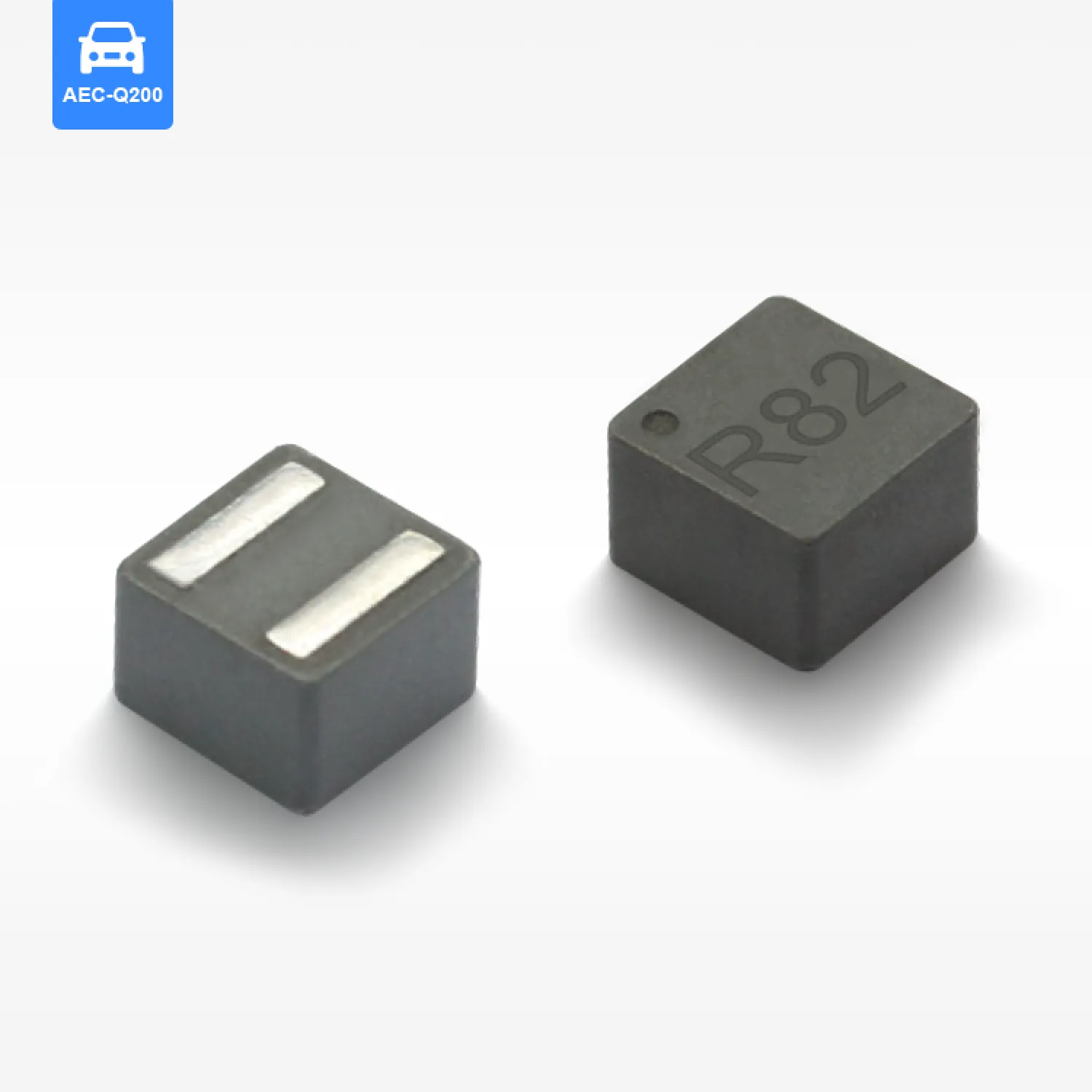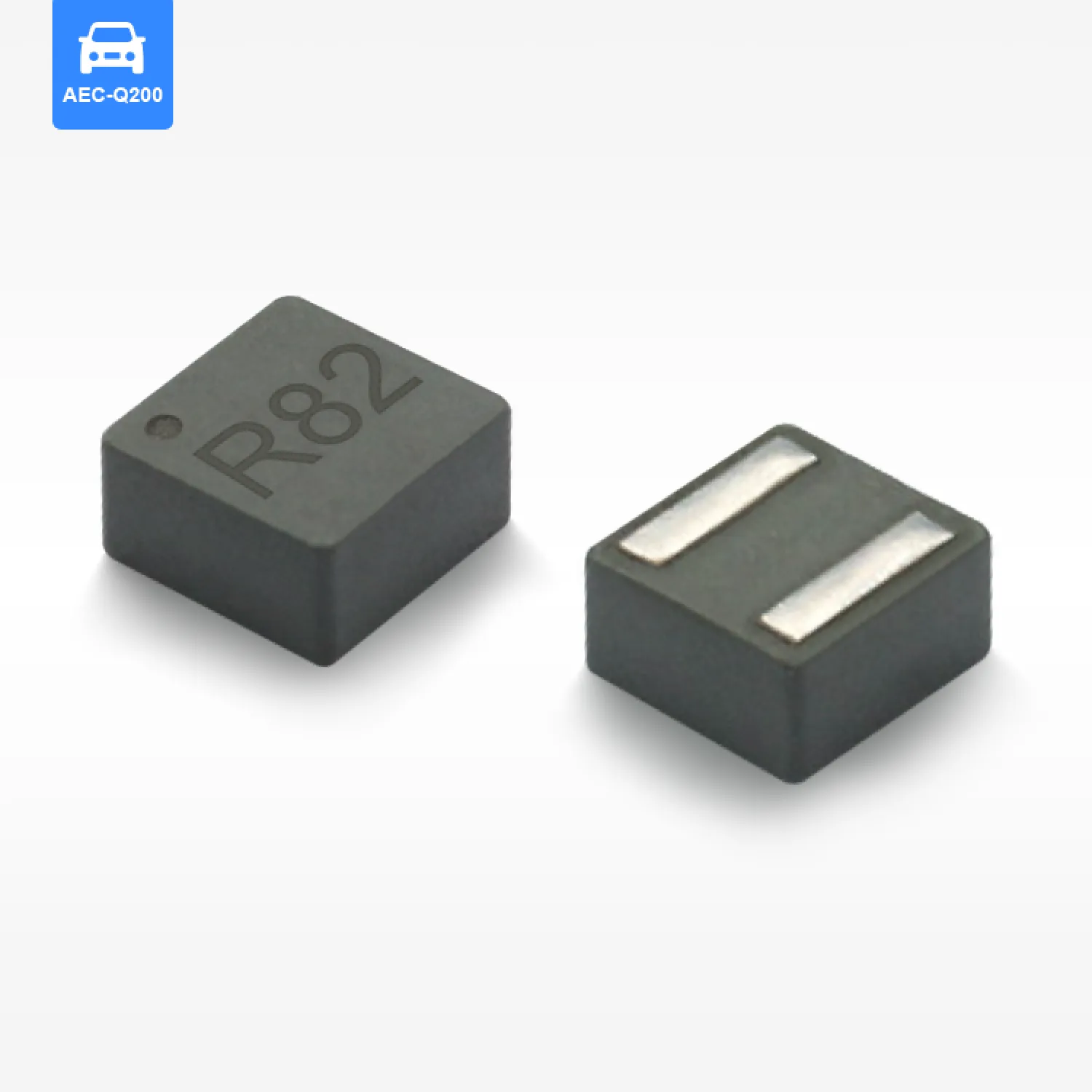Inductance and Current Ratings: Balancing Ripple and Saturation
In automotive applications, understanding the balance between inductance and current ratings is essential. These benchmarks ensure that ripple voltage is minimized and saturation current is effectively managed under varying load conditions. In high-performance systems, for instance, the use of specific inductance values is crucial to maintain circuit reliability; failing to do so can lead to significant inefficiencies or even component failure. According to industry data, inadequate balancing of these parameters can account for an increased failure rate, impacting the reliability of automotive circuits. Selecting the right components helps mitigate such risks and underscores the critical role of carefully assessing inductance ratings in conjunction with current needs.
DC Resistance (DCR) and Efficiency Trade-offs
DC Resistance plays a vital role in determining the overall energy efficiency of an automotive inductor. Inductors with low DC Resistance tend to offer higher efficiency by minimizing energy loss, which is crucial for automotive systems that require optimized energy consumption. By comparing different inductor designs with varying DCR values, one can witness a clear trade-off between efficiency and thermal issues. Although lower DCR values favor efficiency, they might lead to potential thermal challenges. Studies have suggested that the optimal range of DCR should balance efficiency with manageable heat dissipation to prevent overheating, ensuring reliable functionality in demanding automotive environments.
CODACA automotive grade power inductors VSEB0430H and VSEB0530H series are winding by flat wire providing very low DCR and high current, featuring ultra-low loss at high frequencies. The fixed inductors are designed with a shielded composite construction to minimizes audible buzzing.

Hot Molded with High Performance
VSEB0430H and VSEB0530H series exhibit soft-saturation to withstand high peak currents, improving working efficiency. The inductors are hot pressed by alloy powder exhibit no thermal aging issue and they are qualified by AEC-Q200 Grade 0 (−55°C to +155°C) international standards, making them ideal for automotive and other harsh-environment applications.

Core Material Impact on Saturation (Ferrite vs. Metal Alloy)
The choice of core material, such as ferrite or metal alloy, significantly impacts an inductor's saturation behavior under load. Ferrite cores typically excel in applications where saturation needs to be tightly controlled, while metal alloy cores might be preferred for their robustness in high-temperature scenarios. Recent advancements in these materials have enhanced their saturation characteristics, with several manufacturers showcasing data that reflect improved performance metrics.
Advantages of Metal Alloy Cores for Molded Power Inductor
Metal alloy cores are preferred in molded power inductors for their superior saturation limits and enhanced thermal properties. These characteristics make them ideal for automotive applications where high currents and thermal stability are crucial. Metal alloy cores provide better saturation performance compared to ferrite cores, allowing them to handle larger currents without becoming magnetically saturated, thus maintaining efficiency even under stress. A case study on high-demand automotive circuits demonstrated significant performance improvements, highlighting metal alloys' role in more reliable and efficient system operations. Conversely, ferrite cores, while commonly used, may not withstand high current scenarios as effectively, often leading to a drop in inductance and potential circuit failures.

Mechanisms of Thermal Aging in Molded Components
Thermal aging in molded components primarily results from material degradation due to prolonged high thermal exposure. This degradation impacts components like power inductors, which are critical in applications such as automotive systems. Studies suggest that thermal exposure exceeding 100°C can erode the magnetic properties of core materials, increasing core losses and reducing efficiency. For example, tests on power inductors demonstrated how prolonged heat exposure degrades core material, changing its appearance and reducing performance metrics over time. Industry standards like AEC-Q200 highlight the necessity of considering thermal aging in reliability design, ensuring components withstand typical environmental challenges.
Temperature Derating Strategies for Long-Term Reliability
Temperature derating is a strategic approach employed to enhance the longevity and reliability of automotive inductors. Manufacturers often recommend operating these components below their maximum temperature ratings to reduce stress, which empirical data has shown to decrease failure rates significantly. Studies have demonstrated that implementing derating strategies, even by 10-20%, can substantially extend an inductor's operational lifespan and enhance safety measures in automotive systems. For instance, optimizing ambient cooling and positioning inductors in less heat-intensive areas can prevent overheating and prolong component life, thereby ensuring consistent performance.
AEC-Q200 Grade 0/1 Compliance for Extreme Temperatures
AEC-Q200 Grade 0/1 compliance is a crucial certification ensuring electronic components' reliability in extreme temperatures common in automotive environments. Grade 0 certification entails a tolerance to temperatures ranging from -55°C to +150°C, showcasing a component's robustness. Statistics indicate a sharp increase in failure rates for parts that do not meet these stringent standards, underscoring the importance of compliance. Industry experts advise selecting components like those from Wurth Elektronik, which adhere to these quality benchmarks, as this guarantees their performance under challenging conditions, thus maintaining automotive safety and reliability.

Application-Specific Design Considerations
ADAS Power Requirements: Low-Profile vs. High-Current Needs
Advanced Driver Assistance Systems (ADAS) have unique power requirements that necessitate careful consideration of inductor design, especially when differentiating between low-profile and high-current needs. For instance, some components of ADAS, such as sensors and cameras, may prioritize space-saving designs that require low-profile inductors. Conversely, systems that manage significant power, such as radars and processing units, demand high current inductors to accommodate their operational needs.
- Performance comparisons highlight that inductors engineered specifically for ADAS applications often undergo rigorous testing to validate their suitability, ensuring they meet the power and performance standards set by the industry.
- Trends in vehicle technology, like the transition towards more electrically intensive ADAS, drive innovation in inductor design to meet these growing demands.
- Consequently, manufacturers are increasingly focusing on creating customized solutions that balance these aspects effectively.
EV Charging Systems: Managing Transient Current Spikes
The rising popularity of Electric Vehicle (EV) charging systems introduces challenges like managing transient current spikes that can jeopardize system stability. These spikes often occur due to the fluctuating demand for power when an EV is charging, leading to potential damage of system components if left unchecked.
- Statistically, these current spikes can cause significant stress on the conductive paths, necessitating the use of specially designed inductors. These inductors play a crucial role in mitigating the adverse effects by absorbing and smoothing out these fluctuations.
- The market offers numerous solutions tailored for EV charging, each undergoing extensive product testing to ensure they can handle the unique demands of high-current and rapidly changing environments.
- Emphasizing the need for robust testing and certification processes, these solutions strive to uphold system safety and efficiency by effectively managing current transients.
Vibration Resistance for Under-Hood Installations
Vibration resistance is vital for inductors used in under-hood installations in automotive settings, as these components are subject to high levels of mechanical stress. The constant movement and vibration can impact the stability and functionality of inductors if they are not adequately designed to withstand such conditions.
- Typical vibration levels in automotive environments demand that inductors pass mechanical stress tests that validate their ability to cope with repeated and intense vibrations.
- Inductors that have successfully passed these tests often feature specialized materials and design tweaks aimed at enhancing their vibration resistance.
- Additionally, innovations in design, such as reinforced structures and damping mechanisms, contribute to extending the lifespan of these components in challenging automotive applications.
By integrating these features, manufacturers ensure that under-hood components maintain their reliability and performance over the vehicle's life cycle.
Validation and Testing Protocols
Interpreting DC Superimposition Current Graphs
DC superimposition current graphs are crucial in evaluating the performance of inductors, particularly in dynamic environments such as automotive and industrial applications. These graphs depict how inductance values change when a direct current (DC) is superimposed on the alternating current (AC). Engineers should pay close attention to indicators like saturation current levels and core losses, which are vital for judging the inductor's reliability. However, common interpretation pitfalls, such as neglecting temperature dependency or failing to account for DC bias effects, can lead to misjudgments, impacting component performance.
Accelerated Thermal Aging Tests (1000hrs @ 150°C)
Accelerated thermal aging tests, such as those conducted at 150°C for 1000 hours, are designed to predict the long-term performance of inductors. This testing exposes components to extreme temperatures, simulating years of real-world wear in a condensed timeframe. Results often reveal performance degradation, including reduced inductance or increased resistance, indicating potential failure points. Historical data shows a correlation between these tests and real-world scenarios in automotive applications, providing valuable insights into a component's lifespan and reliability under continuous high-temperature conditions.
Mechanical Stress Testing for Automotive Vibration Compliance
Mechanical stress testing is essential for ensuring that inductors meet compliance standards in vibration-prone automotive environments. Standards such as the Automotive Electronics Council's AEC-Q200 provide guidelines for testing inductors against extreme conditions. Inductors that pass these tests demonstrate high reliability and resilience, ensuring stable performance even in demanding situations. This process highlights the importance of mechanical testing as a vital part of quality assurance, ultimately ensuring the durability and consistent operation of inductors in automotive applications.
FAQ
Why is balancing inductance and current ratings important in automotive applications?
Balancing inductance and current ratings is crucial to minimize ripple voltage and manage saturation current effectively. Failing to properly balance these parameters can lead to inefficiencies and increased failure rates in automotive circuits.
What are the benefits of using metal alloy cores in high current applications?
Metal alloy cores have superior saturation limits and enhanced thermal properties, making them ideal for automotive applications that require handling high currents and ensuring thermal stability.
How do SMD ferrite beads contribute to thermal stability?
SMD ferrite beads maintain consistent performance across a range of high-temperature conditions, making them suitable for automotive electronics that experience extreme heat, thereby enhancing thermal resilience.
What role do accelerated thermal aging tests play in evaluating inductors?
Accelerated thermal aging tests predict long-term performance by simulating years of wear in a shorter timeframe, revealing potential failure points and providing insights into inductor lifespan under high-temperature conditions.

